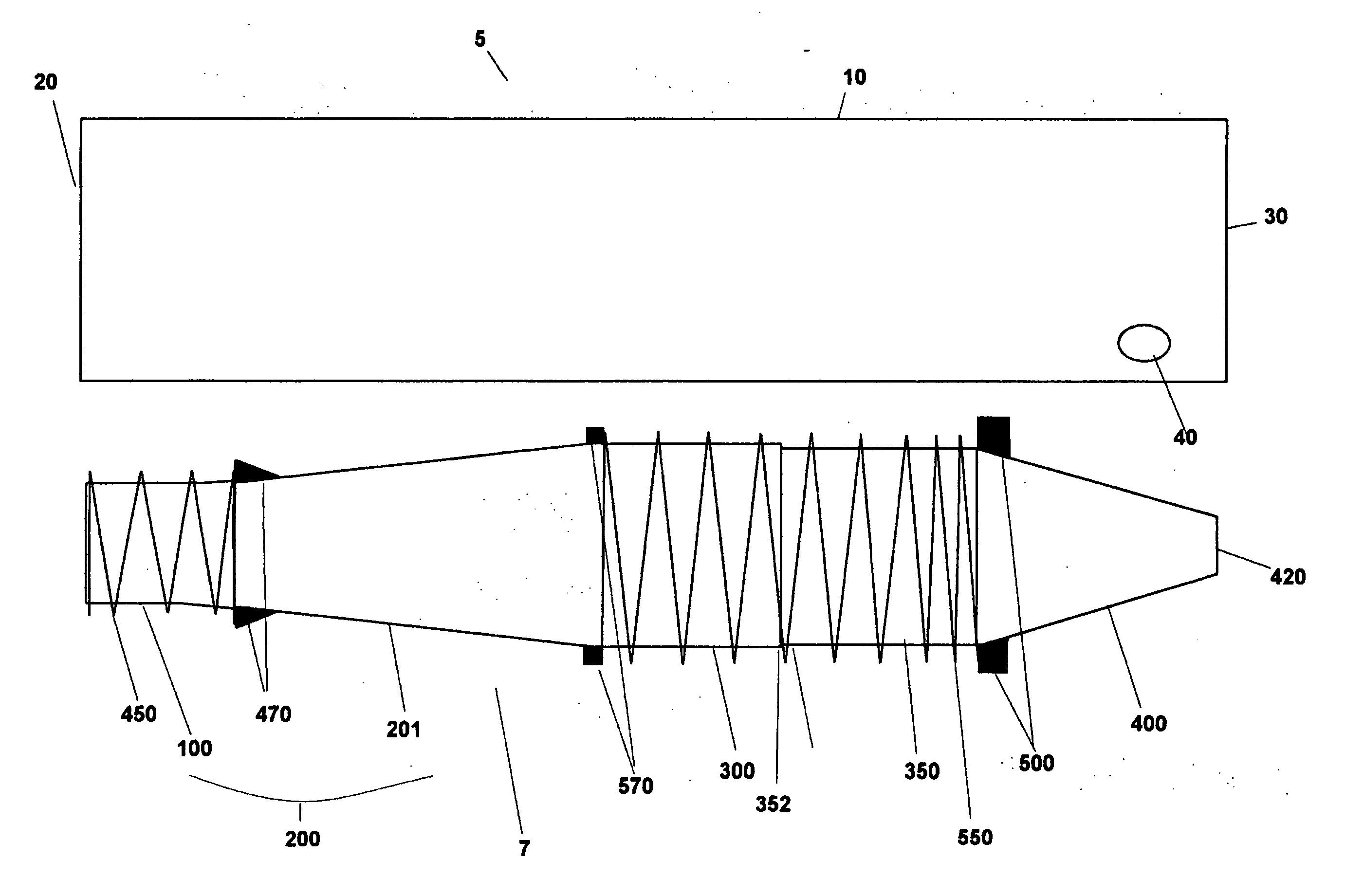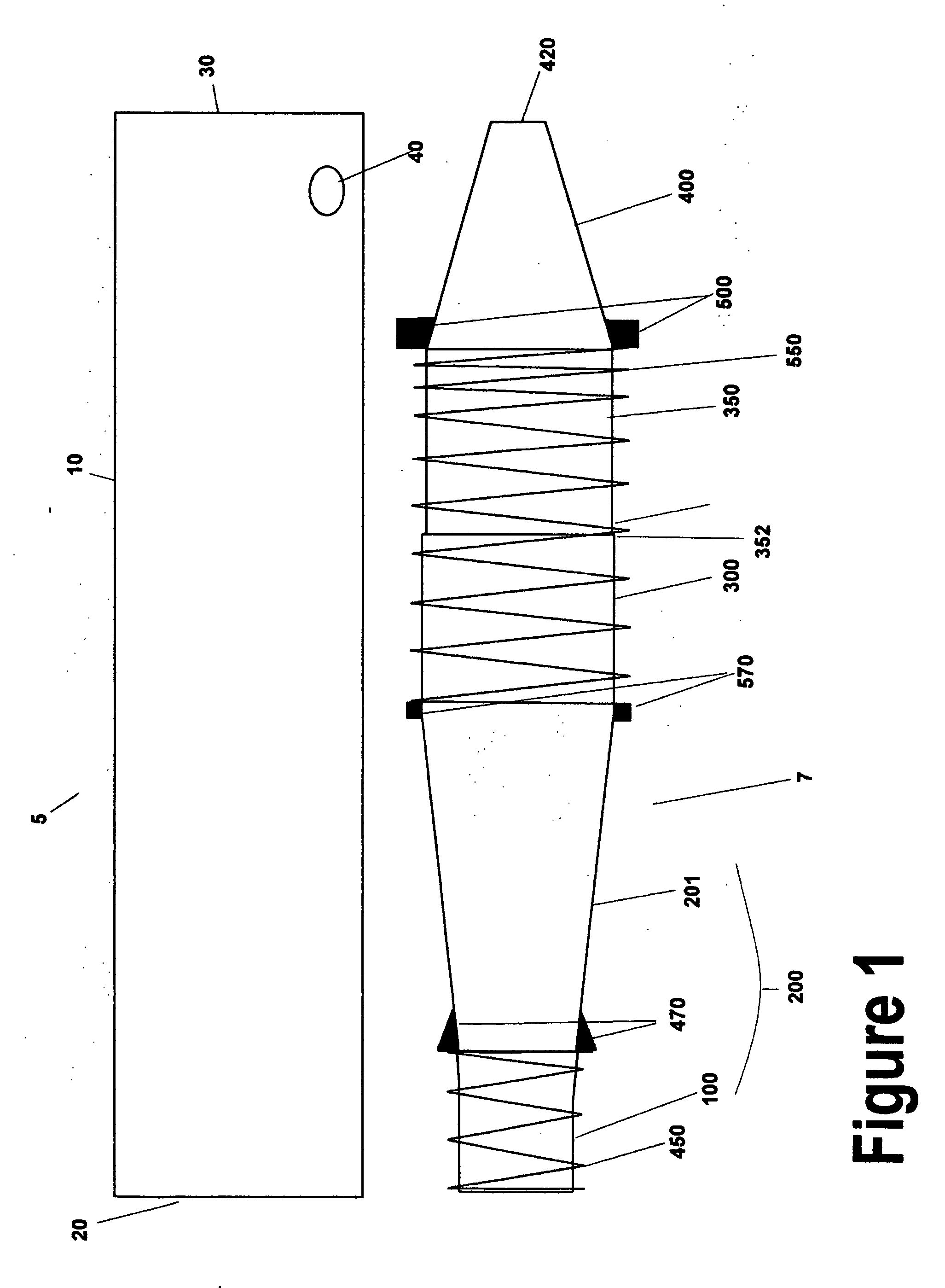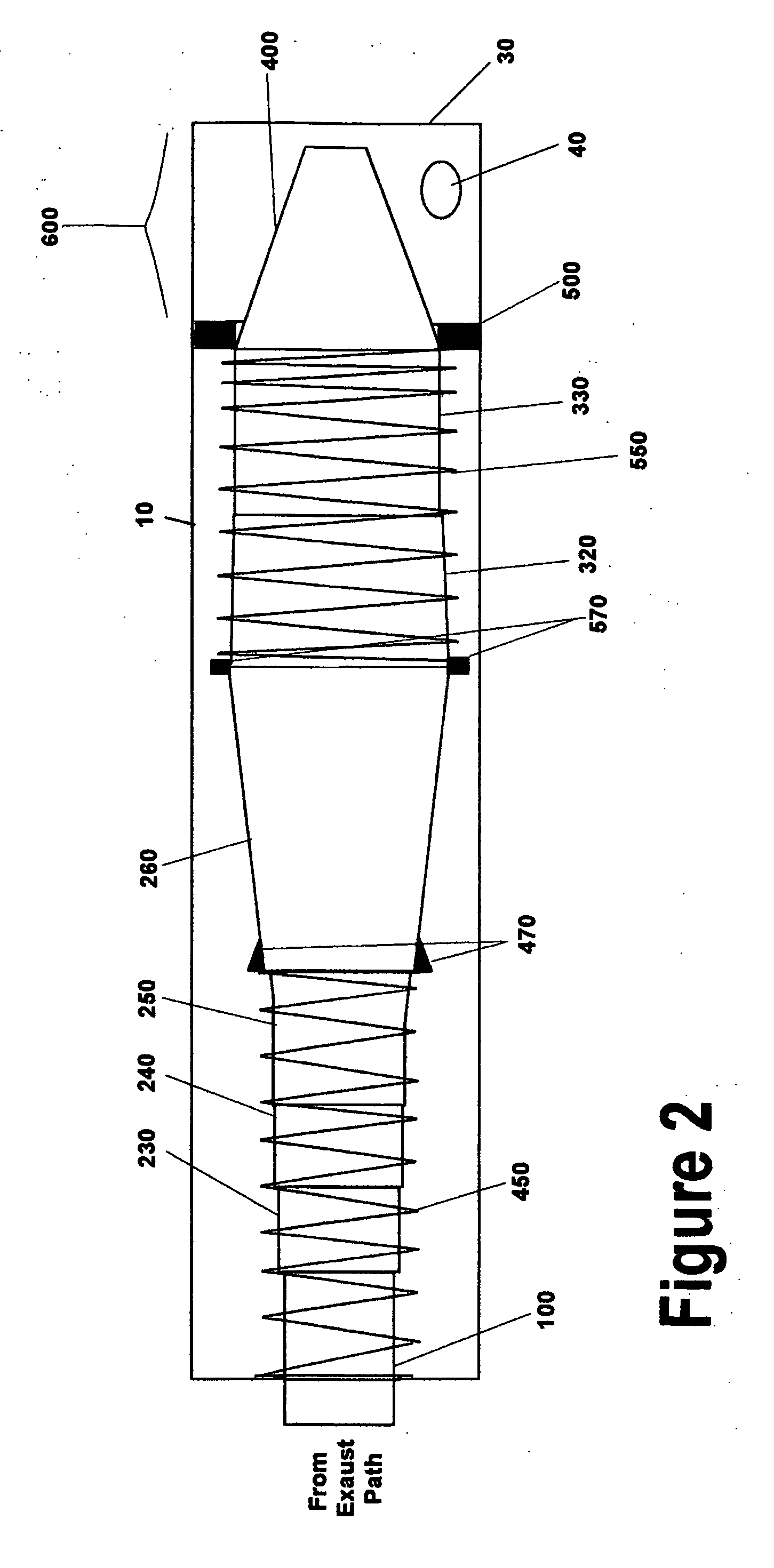Previous efforts at exhaust systems have attempted to provide such pressure variations; however, these efforts have all fallen short due to the complex design considerations.
These solutions suffer from significantly
increased sizes and weights, characteristics that detract from the performance gains that such solutions provide.
Moreover, the vast majority of previous designs do not provide for adequate automatic adjustment of tuned length during operation.
Instead, these designs rely on inaccurate mechanical and manual controls or limited automatic controls, if any at all, that cannot make adjustments during the operation of the system.
None of the existing designs has been able to provide a satisfactory combination of these important characteristics.
It does not provide for adjustment, much less dynamic adjustment of the tuned length of the exhaust system.
Nor does it provide for manipulation of the convergent and divergent portions of an exhaust in
unison or variation in the geometry of such sections to vary either the angle of expansion or the angle of convergence in these sections.
However, the additional components add significant weight to the overall system and require modifications to provide a dual path exhaust chamber.
Moreover, this system is overly complex, requiring switching between low and high RPM chamber flows.
It is also limited in its RPM response, therefore limiting its overall performance.
Several problems arise in the operation of such a device.
This can tax the ability of the operator to simultaneously change the exhaust length and control the vehicle.
Moreover, there are significant problems in using this on small scale vehicles, such as hobby craft.
In many instances the operator of these types of vehicles is not traveling on the vehicle and operator adjustment is thus impossible.
This design also suffers from significant additional weight due to the control mechanism and cannot be accurately adjusted across a wide range of RPMs, just those for which the controller is pre-positioned.
Finally, the reference does not teach nor suggest the movement of both divergent and convergent sections or variation of the relative geometries to vary either the angle of expansion or the angle of convergence in these sections, resulting in far less of a performance
gain.
In this design, the tuned length of the exhaust system is not truly adjusted.
Only the backpressure within the system is increased by obstruction with the end cap.
Thus, performance gains are marginal and tuned length is not adjusted over a range of RPMs.
Furthermore, the relative movement of both a divergent and convergent section of the exhaust or the variation of the geometry of either of these sections to adjust the angle of expansion or convergence is not considered in this design.
This and similar patents provide for a variety of components to reduce the flow cross-section of the exhaust and increase backpressure, however, each falls short in that the reduction in the flow of the exhaust drops peak performance and reduces power at the highest RPM levels, specifically the RPM range beyond the peak
power level, where exhaust pressures drop and a restriction in the flow or cross-sectional flow area is highly detrimental to performance.
Again, this increases the
back pressure but does not provide for adjustment of the tuned length of the exhaust system, thus, performance gains are marginal and tuned length is not adjusted.
Furthermore, adjustments during operation are not possible, limiting the performance gains available.
Finally, the design fails to move either a belly or convergent cone or a header or divergent cone section, much less move these elements simultaneously or vary the geometry of these sections to manipulate the angle of convergence or
divergence in the section.
Additionally, this system fails to provide for dynamic adjustment of the exhaust system.
This system cannot make these adjustments dynamically, moreover, it does not adjust either the length of a divergent or the convergent cone section, nor does it vary the geometry of such sections to achieve any
performance enhancement.
Although this may change the
pressure wave within the system, it does not provide for adjustment of the tuned length of the system.
Additionally, by simply adding volume in this fashion to manipulate the
pressure wave it results in a larger overall exhaust, adding weight that detracts from performance gains.
In addition, although the overall volume of the exhaust may be varied, the critical parts in developing the pressure
waves, namely those elements like the convergent and divergent cones that produce
pressure wave reflections, are not being efficiently manipulated.
As the convergent and divergent cone sections are not manipulated and the system is utilizing a larger bore exhaust, its performance is diminished significantly.
Again, this does not provide for dynamic adjustment of the tuned length of the exhaust system.
It also fails to manipulate either a divergent or convergent cone section to do this.
It does not provide for variation in the expansion or convergence angles of these sections.
Thus, these prior attempts are inadequately addressing the problem of automatically adjusting the tuned length of an exhaust system to provide for increased performance across a wide range of applications and engine speeds.
 Login to View More
Login to View More  Login to View More
Login to View More 


